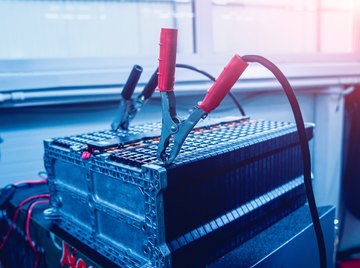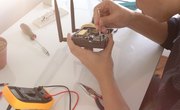
Industry and home emergency generators use three-phase electric motors. All three outputs carry the same current, and power transfer remains constant, flowing into a linear and balanced load. To make a power to amperes conversion, you need to know the voltage and power factors of the electric motor. Power factor defines a delay between the voltage and the actual electrical current flow. The identification nameplate of most large electrical motors that use three-phase power contains this number.
This formula calculates the power of a generator for the particular current or amps at a given voltage:
Only in this case, multiply the result by 1.732.
It is important to identify three types of power:
Active (real or true) power is measured in watts (W) and is the power drawn by the electrical resistance of a system doing useful work.
Volt-amperes reactive (VAR) measure reactive power. Inductive motors, transformers and solenoids store and discharge reactive power.
Volt-amperes (VA) measure apparent power. This is the voltage on an AC system multiplied by all the current that flows in it and the sum of the active and the reactive power.
The relationship between active and apparent power is:
- Calculator
- Pen/pencil
- Paper
- Power factor number
- Digital voltmeter
Be sure that your measurements are in the standard units. For a motor or generator in kilowatts, convert it to watts: 1 kW = 1000 Watts.
Obtain the voltage measurement if not already provided. Use a quality digital voltmeter to measure the voltage line-to-line between any two of the three outputs.
Find the power factor (p.f.) on the identification nameplate. For a purely resistive circuit, the power factor equals 1.0 (perfect).
Use the Ohm's law formula:
Arrange the equation for three-phase power to solve the current (amps):
Substitute the value of the power you need to convert (in watts), the value of the voltage (in volts), and the power factor to find the current (in amps).
For example, use the following formula to calculate the current of a three-phase electrical generator that has a power of 114 kW, a given voltage of 440 volts and a power factor rating of 0.8:
The current is 187 amps.
Things You'll Need
References
